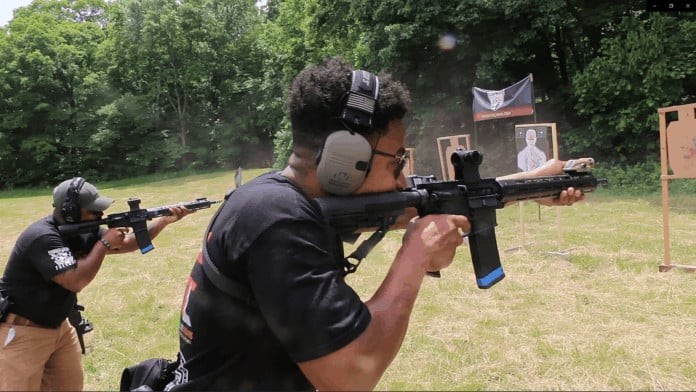Owning a firearm means you have to take into consideration not just the safety of the people around you but your safety too and a crucial part of gun safety is protecting your ears from the noise of your firearm. It’s no brainer that firearms create noise when fired but when you take into account other factors like the location and the gun you are using, the noise would be very unsafe for you. While some firearm accessories like firearm Silencers can reduce the noise created by a firearm, they are no substitute for a nice pair of ear protection. Not to mention the fact that getting a registered Silencer will be so much difficult than getting ear protection.
So what ear protection should you get? Why should you even get ear protection? What are the types of ear protection out there? and What should you consider before getting ear protection? You see there is a lot more to know about firearms and ear protection. Don’t worry though; www.fullyloadedclip.com has got your back. This post will introduce to you all you need to know about ear protection. So, let’s fire on.
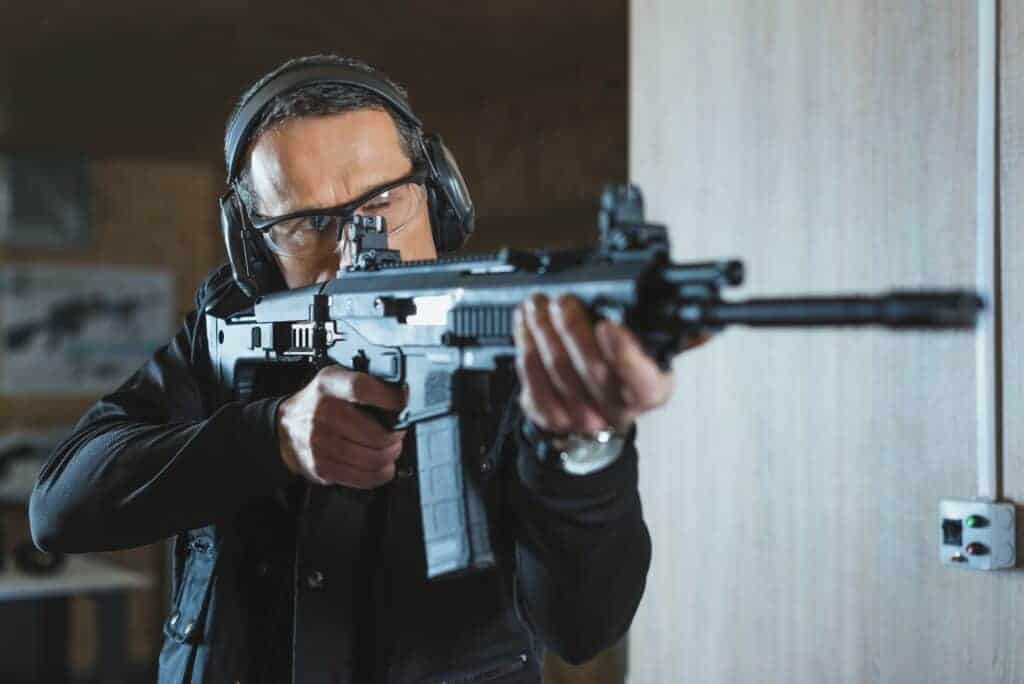
Table of Contents
HOW LOUD IS A FIREARM?
There is no fixed decibel for all guns. The noise created from guns depends on a lot of factors such as the location of the shot, the firearm itself, the ammo used, the velocity, and the accessories used with the gun. Muzzle breaks for instance amplify the noise created by a firearm. Most of the licensed firearms in the U.S. can produce sounds between 140 decibels to over 170 decibels. Though we can’t agree on a fixed decibel, we can all agree that firearms can be very loud.
.22-caliber rifles like the Remington Model 34, Winchester 68, and the Ruger 96 can produce sounds up to 140 dB. When you consider the more common firearms like pistols, handguns, and shotguns, we are talking about sounds greater than 155 dB. For instance, the .45 ACP creates a sound of about 158 decibels while 9mm pistols come in 159 dB and that is the sound of the gun on its own. Think about when you fire such a firearm in an enclosed space. The sound which is already over 155 dB can bounce off walls and resonate thereby creating sounds of up to 180 dB. Without ear protection, such sounds can cause permanent deafness.
WHY SHOULD YOU USE EAR PROTECTION?
You need to use ear protection to protect your ears from the intense sound your firearm creates when you pull the trigger. People that use firearms are more likely to suffer from hearing loss than people that do not and 90% of shooters that experience some form of ear defect develop such issues due to constant firearm use without ear protection. This makes it essential to cover your ears when shooting. The human ear is delicate. Frequent exposure to sounds more than 140 decibels (dB) can damage the ear permanently and virtually every firearm produces a sound that is more than 140 dB. The good news is you can vie for some quality ear protection.

- The right ear protector will protect your ears from the loud bangs of your firearm. This is the most obvious reason for putting on ear protectors. But it’s not all that straight forward. The wrong pair of ear protectors wouldn’t do you much good. That’s why you need to wear the right ear protection with good enough NR rating. Looking for the right one might also require you to use double or dual hearing protectors. Don’t sweat it, we’ll get down to how to calculate the rate of reduction of your ear protector in just a moment.
- Ear protection can improve your concentration. If you are a beginner, then there is a chance you will flinch because of the sound of the gun. Due to claims and reports from veterans about how loud a gun can be, most beginners focus their attention on and anticipate the sound of the gun rather than focus on the target. With ear protection in place, you will focus more on your intended target than the sound from the firearm.
WHAT SHOULD YOU CONSIDER BEFORE GETTING EAR PROTECTION?
Getting ear protection doesn’t mean you just waltz into a gun store and pick the first earplug or earmuff you see. You need to consider a few factors.
The decibel level of your firearm. While it is impossible for every gun to have one dB level, you can discover the decibel level of the firearm you have. The noisier the firearm, the stronger the ear protection you will need. You may not know this but just like firearms, ear protections also have different grades. A 9mm firearm like the Glock 19 would require stronger ear protection than a .22 caliber rifle.
The NR (Noise reduction) rating of the ear protection you want to buy or use. While hearing protectors generally reduce your exposure to noise, your level of exposure to noise is based on the NR rating of the earing protector you are using. Contrary to popular beliefs, the hearing protector being used does not reduce the surrounding decibel level by the exact number of decibels associated with the protector’s NRR.
This means if your gun produces a sound of 150dB and you are wearing earplugs with an NRR 35dB, your level of exposure isn’t reduced to 115dB. To calculate the amount of dB reduction, you will take the NRR number in (dB) and subtract 7. Then you divide by 2. This means if your gun produces a sound of 150dB in an indoor range and you are wearing earplugs with an NRR 35dB, your equation will be 35(dB) – 7 = 28 and 28/2 = 14. This means your earplugs will reduce the surrounding sound that you hear to 136dB.
If the above example is to be taking into context, then you know that ear protector with a NR rating of 35dB is not good enough since all it does is to reduce the level of exposure by 14(dB).
The location. Using a gun indoors such as in an indoor range will result in louder sounds than using that same gun outdoors. While outdoors, the sound doesn’t bounce off anything which causes the sound to travel far in different directions. It’s very different indoors. While indoors, the sound created from the gun bounces off the walls, ceiling, floors, and other objects causing the already loud sound to resonate. Though some indoor shooting ranges have modified their shooting areas to reduce the sound heard inside, all indoor shooting ranges wouldn’t even let you near the shooting area without ear protection.
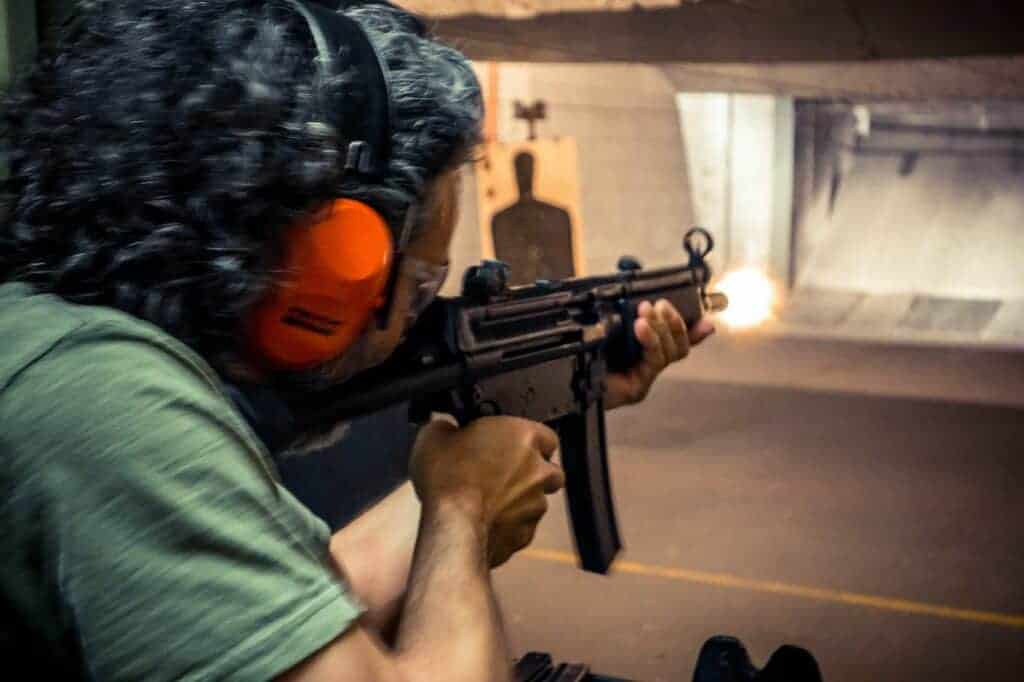
The type of gun you have. Yes, the type of gun you have determines the sound level the gun would produce. But the type of gun also determines how you hold the gun.If you are using a rifle or shotgun, the firearm would be held closer to you than a pistol or handgun which is held at arm’s length. This is because shotguns and rifles are longer and heavier than regular handguns. So you have to carry the gun with both hands and in such a position that the firearm sometimes rests against your shoulder.
Some rifles have a scope which means the gun has to be brought even closer to your face. A shot from such a rifle or shotgun means the sound will be closer to your face and thus, your ears. Rifles and shotguns create sounds that are already too loud, now think of the sound when you bring the gun closer to your face. So if you have a loud rifle or shotgun, combining foam plugs and earmuffs will be perfect.
Firearm suppressors. Owning a registered firearm suppressor is a big plus. Suppressors reduce the sound created by your firearm. I mean it’s in the name, “Firearm suppressor.” Having one means you don’t have to use ear protection right? Not quite, though silencers otherwise known as firearm suppressors reduce the sound from your gun, they don’t exactly eliminate the sound as you think. They help but it depends largely on the caliber of your gun.
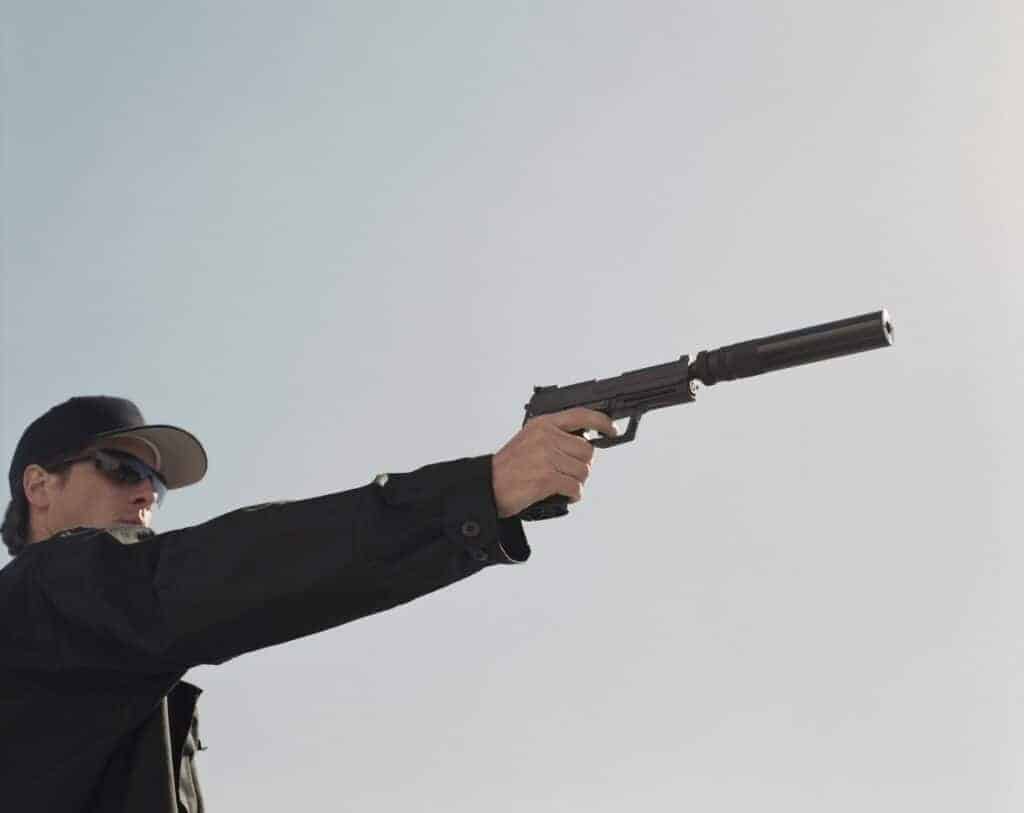
A firearm suppressor will reduce the sound of your firearm by 30 dB. Though that sound level is safe for the ears, it might still cause a few concerns if you have really sensitive ears. Also, if you will be shooting at the range or with a group of other shooters, you will need ear protection because while your gun is considerably silent due to the suppressor, the sounds from the other guns being fired at the range or by your friends are strong enough to deafen you. So in addition to owning a firearm suppressor, you should still get ear protection.
Your budget. There is a slight tweak in the prices of ear protection. Generally, ear protections aren’t costly. You can get a good pair of earplugs for as low as $10 and some earmuffs can cost up to $60 or more. The one you go for depends largely on your budget too.
THE TYPES OF EAR PROTECTION
There are different types of ear protection for shooters.
- Foam plugs. These are made from light foam and are made soft so they don’t cause your ears to hurt or ache. The plugs are shaped like cartridges so you have to fix them in your ear properly. They come in different colors. The most common, being the bright orange ones.

Pros:
- Foam plugs are easy to find. You can get them in just about any convenience or gun store.
- Foam plugs are pocket-friendly. They are undoubtedly the cheapest types of ear protection. You can get a pack for as low as $10 on Amazon.
Cons:
- The plugs are not that convenient. The fact that you have to stick them into your ears might be uncomfortable. They can also irritate you during shooting classes.
- They aren’t exactly the best fit for louder guns.
- Some foam plugs are made for single use meaning you can’t reuse them.
- Plastic plugs. Plastic plugs are similar to foam plugs. The main distinction is that these are made from plastic and not foam. They fit in your external ear canal. Plastic earplugs are also cheap. You can get them for as low as $12 and some even cost less.
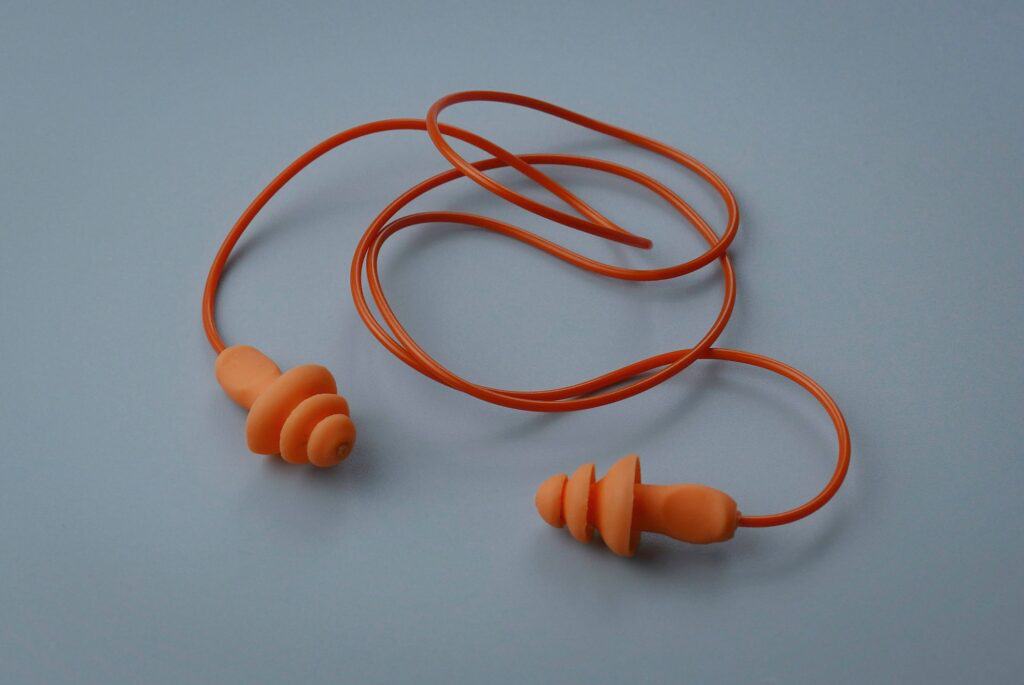
Pros:
- The plugs are great in warm weather
- They are more suited for outdoor use.
Cons:
- They are also small which makes them easy to lose
- The plugs are made from soft plastic which can still make your ears feel sore if you use them for a long time.
- Like foam plugs, they aren’t the best choice with louder guns.
- Electronic earmuffs. Electronic earmuffs are battery-operated ear protection. They amplify softer sounds but shut off any loud sound. Thus, you can still hear your surroundings. They are built similarly to headsets, so they also go over the ear typically with a gel or foam seal. Some fancy models have a Bluetooth feature that allows you to connect the earmuffs to your phone.
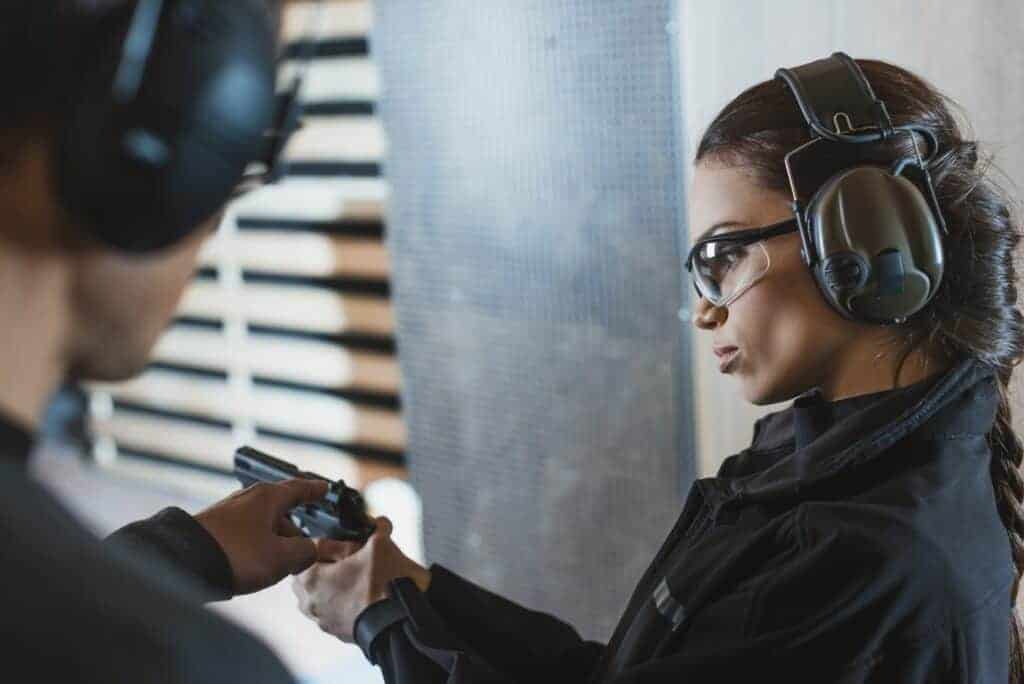
Pros:
- Great for learning environments where you still need to hear instructions
- They are durable and strong, so they last longer
- They are stylish
Cons:
- They are a bit high-priced if you compare them to the plastic or foam earplugs. A quality pair of electronic earmuffs can cost you over $30 but you are getting so much more than the foam plugs will give you. It all depends on your budget.
- You can lose the seal around your ear while shooting certain rifles or if you put on protective glasses.
- Non-electric Earmuffs. These earmuffs are largely similar to the electronic earmuffs in terms of build. They are also built like headsets and they go over the ear. The basic distinction is that they aren’t electric and most of them do not use batteries. In terms of price, they range according to build. You can get them for about $20 and some cost more.
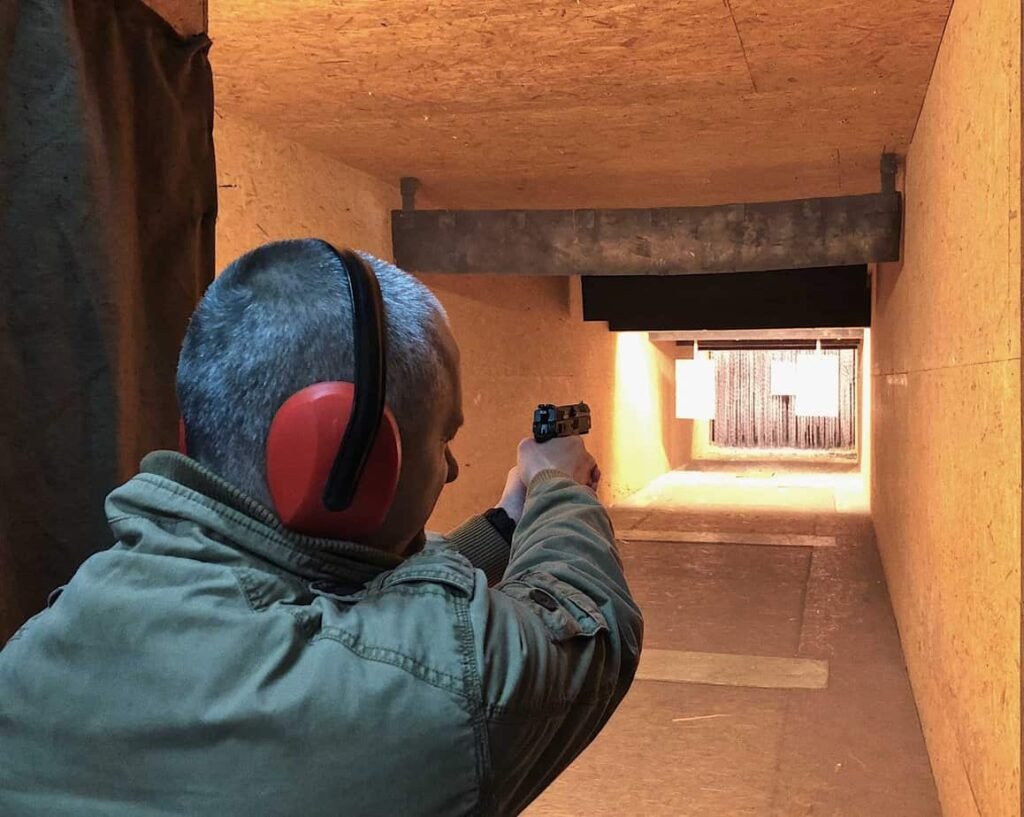
Pros:
- They are affordable
- They block out shooting rounds effectively
Cons:
- They block out every sound. Unlike the electronic models that block out shooting rounds and still make it possible to hear instructions during classes, non-electronic ear muffs will block out more than shooting rounds.
- Custom made earplugs. Custom made earplugs are a perfect fit. These earplugs are specially built for you. You will have to visit an earplug manufacturer to get the size of your ear measured and then the earplug is built to give you maximum ear protection and comfort.
Pros:
- They are a perfect fit for your ears
- They are good noise cancellers
- Some are pro-electric which makes it possible to hear softer sounds
- They are great for indoor and outdoor events
- They reduce the risk of getting ear infections since you alone can use them.
Cons:
- They are rather expensive. They can cost up to $90
- The small size makes it easy to lose if you are careless
- It can take a while before they are made.
SHOULD I PUT ON DOUBLE EAR PROTECTION?
Either you put on double ear protection or not depends on the result you get from calcuating the reduction level in dB of the ear protector you have. Just use the method above to calculate the reduction level and if you discover that your ear protector isn’t strong enough, then you might need to use double ear protection. However, when you combine ear protection, you can’t use the method above to calculate the reduced level of exposure. So how do you go about it?
When you combine ear protection, say a pair of earplugs and earmuffs, you will need to add 5 more decibels (dB) of protection to the ear protector with higher NRR. For instance, if you are wearing earplugs with NR 35 rating and earmuffs with NR 33 rating, you will add 5 (dB in reduction) to the earplugs with NR 35 rating. This gives you an enhanced reduction level of about 40 Db. This will help you to decide which ear protection combination to go for.
Recommendation
I strongly believe in quality and durability. I would recommend the electronic earmuffs if you want a pocket-friendly choice. With a pair, you are guaranteed comfort, safety, and maximum protection from noise. If you got cash and you are ready to spend it on ear protection, then I would recommend the custom made earplugs. Just be careful so you don’t lose them.
Overall, ear protection does a lot of good for you, so you should consider getting one except you fancy a long visit to the audiologist. If you have any questions about ear protection or any other part of gun safety, you can leave your questions below in the comment section and I’ll answer them as soon as possible. From fullyloadedclip, do have a great day.
